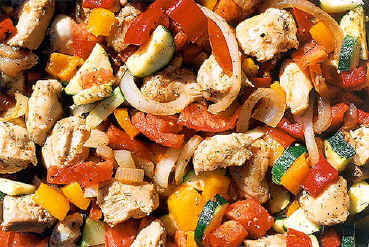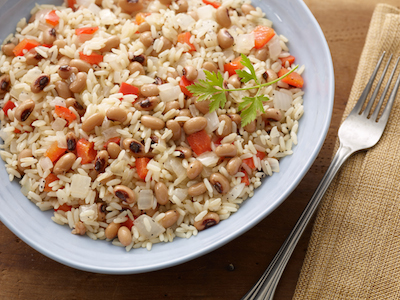 New Year’s Eve – for millions of people around the world it’s a time of renewal, when everything old is washed away and there’s nothing but fresh new days ahead. But how do you kick off the New Year in a way that will bring the most peace, prosperity, and happiness to both you and your family?
New Year’s Eve – for millions of people around the world it’s a time of renewal, when everything old is washed away and there’s nothing but fresh new days ahead. But how do you kick off the New Year in a way that will bring the most peace, prosperity, and happiness to both you and your family?
The answer really depends on where you live.
Did you know that in ancient Thailand, guns were fired on the first day of the New Year to frighten off any demons that may be lurking? Early Americans in the colonies used pistol shots to mark the New Year too, but instead of gunshots, Italians let church bells chime late into the night and early morning to symbolize a brand new year.
Food is traditionally used to symbolize the New Year too, and eating lucky food is supposed to bring you good fortune for the rest of the year. In Spain, there is a tradition of quickly eating 12 grapes at midnight to symbolize their hopes for a great New Year. The Swiss drop whip cream on the floor to bring richness to their homes. Dutch homes eat round treats like donuts to bring good fortune because they symbolize coming full circle.
Here’s a look at how a few other spots around the world use food to celebrate the New Year:
Junkanoo in the Bahamas 
After a busy lead up to Christmas, most people are dreaming of a sunny, hot vacation on a beach somewhere. If you actually go to the Bahamas, you’ll be in luck because not only will you get to sun yourself on some of the most beautiful beaches in the world, you’ll get to take part in the Junkanoo festivities.
A tradition for more than a century, Junkanoo is a celebration where people eat, drink, dance, and celebrate in beautiful outfits. People of all ages form a procession that leads to a special party where the fun doesn’t end until the wee hours. Of course, during these celebrations there’s a lot of food to be eaten, and one of the mainstays is Junkanoo Chicken and Rice.
|
Ingredients:
|
Directions
- Prepare rice according to package directions or using a rice cooker, but substitute tomato juice for water and add chopped celery and diced red pepper.
- Heat oil in large skillet and sauté onions, peppers, zucchinis and mushrooms.
- Whisk together chicken broth, soy sauce, starch and ginger in a separate bowl.
- Add liquid mixture to vegetables and cook over a low heat until it boils and thickens, stirring frequently.

Down South for the New Year
There’s no place more beautiful than down South during the Holidays, and the first food you’ll be offered just after midnight on New Year’s Day just may be Hoppin John. The dish incorporates the traditional black-eyed peas and is served everywhere from gourmet dinners to small family gatherings
Dating back to the Civil War, black-eyed peas were one of the crops ignored by Sherman’s troops and therefore became a staple for the many people rebuilding after the war. These days, black-eyed peas symbolize luck and prosperity for the New Year.
Hoppin’ John
|
Ingredients:
|
Directions
In a large saucepan sauté chopped onion in bacon drippings until tender. Stir in black-eyed peas, ham, and cayenne pepper. Simmer for 10 minutes; stir in hot cooked rice and salt. Serve Hoppin’ John hot with sliced onion.
Hoppin’ John serves 4 to 6.
A New Year’s Day Tradition in Norway
There are few things more beautiful on a buffet table than a kransekake. This tiered cake dates back thousands of years and originated in Greece. Legend has it that the Amalthea the nymph raised the god Zev in a cave and fed him goat’s milk. In return, she received the ‘horn of abundance’ or overflødighetshorn, which is where the kransekake developed from.
Sometimes you’ll see the kransekake lying down on the table to look like a cornucuopia. Other times, at weddings and baptisms for example, it will stand straight up in a tower. However you make it, it’s meant to symbolize all of your wishes coming true.
Kransekake Recipe
From mylittlenorway.com. This cake takes up to two days to make as the dough needs to rest and freeze.
|
Ingredients:
|
Directions
Step 1
Skinning the almonds: Add only half the almonds to a pot of boiling water. Turn off the heat and leave them for 2-3 minutes. Pour the almonds into a strainer and rinse them under cold water. Take a fistful of the almonds at a time and rub them in a towel to make the skin loose. Pop the almonds out of their skin and leave to dry for a few hours or over night.
Step 2
Making the dough: Grind the skinned and unskinned almonds in an almond grinder or food processor. Add the icing sugar and mix. Add egg-whites until the mixture becomes stretchy and firm. Cover the bowl with plastic and put in the fridge for a couple of hours.
Step 3
Baking the cake: Grease kransekaker moulds and sprinkle with semolina or fine bread crumbs. Note: You can also make free-form rings by rolling them by hand. No need for semolina or bread crumbs, instead use baking paper so the dough doesn’t stick to the baking tray. Heat oven to 200oC (390oF). Take a lump of dough at a time and roll into finger thick lengths that fit the moulds and join by squishing them together. If making free-form rings, make the smallest first to guide ring size progression. Make sure the rings overlap in size so they can rest on each other creating a pyramid shape. Cook the rings in the centre of the oven for about 10mins or until golden. Cool them before putting them in an air-tight box. Leave the box in the freezer for at least 24 hours. This will make the kransekaker nice and chewy.
Step 4
Constructing the cake: Defrost the rings for 30mins minimum. Make icing by beating one egg white with 3dl of icing sugar. Fill the icing in an icing-bag. Assemble the cake from biggest ring to smallest using the icing as glue by zig-zagging the icing across the rings.
Step 5
Decorate with tinsel, flags, party poppers, sparklers and wrapped lollies.
How are you planning on bringing in the New Year? Wishing you peace, joy, and prosperity for 2014!



